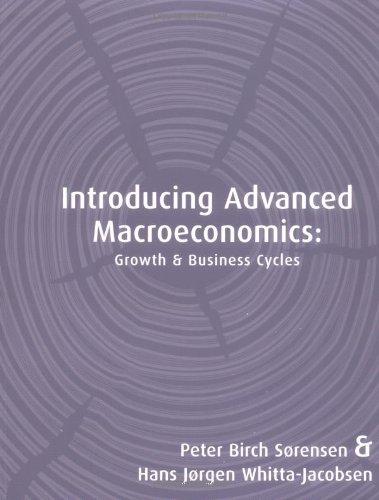Exercise 9. Further numerical evaluation of g Y in the model with both land and oil Consider
Question:
Exercise 9. Further numerical evaluation of g Y in the model with both land and oil Consider equation (35), which assumes a= 0.2, f3 = 0.6, K = r. = 0.1, and (36), which assumes further n = 0.01 and sE= 0.005. In the text we reminded you that a considerably higher population growth rate, e.g. n = 0.03, would change the conclusion that the growth drag from population growth is of a modest size. Is something similar true for the growth drag from depletion of the exhaustible resource? What would this drag be if, e.g., sE= 0.015 were more realistic? Why is the trebling of the relevant rate less important for s Ethan for n?
Exercise 1 0. Are the estimated coefficients in the Solow model with land and oil reasonable?
Consider equation (37) and the estimation in (38) based on it. Are the estimated values of y 1, y 2 and y3 reasonable for plausible parameter values? Back out implied values for
a, {3, K and E from the estimation and judge their reasonableness. As in Exercise 3 above, discuss if the introduction of both land and oil can substitute for the introduction of human capital.
Step by Step Answer:

Introducing Advanced Macroeconomics: Growth And Business Cycles
ISBN: 9783031200922
1st Edition
Authors: Peter Birch Sørensen, Hans Jørgen Whitta-Jacobsen






